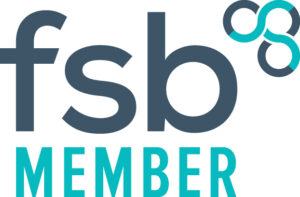
Having been fortunate to be awarded “Best Quality Marketing Provider – Hampshire” it seemed the right time to try to explain what it is we do for our clients.
The reality is that no two clients are the same, but here we go.
We’re often asked what should be included in a monthly marketing plan for a growing business. The answer is often: “That depends on your type of business and what you want to achieve”. There will be some elements that are likely to be included in most of the activity plans we recommend for our clients. We aim to deliver more of the success a business using marketing and business development tools. Let’s take a hypothetical scenario of a company whose clients are other businesses and that the company is delivering a service rather than making a product.
Our marketing recommendations would normally be made under the following four headings:
- Content
- Communication
- Customer
- Calculate
Content We are brand story tellers. We ask the right questions about what you do, we take an interest in your business, what it does and how it helps people. We seek to understand how you deliver your service, your way, in a manner that no one else can copy because they are not you. We are then able to generate powerful content on your behalf. This is our USP. The content topics will be wide and varied, depending on your activities, priorities and what is happening in your market. Examples include: a new service, a case study, success stories, charity news, an award, a new staff member, an opinion of something in your industry, research or a developing news story. We can help you identify the content opportunities that perhaps you can’t see yourself, and we have the time and skills to exploit them on your behalf. It is the regular creation of content that is the basis upon which all monthly communications are planned.
Communication Let’s assume that your content is being written and you are in the good habit of uploading it to your website. Now we put that content to work on your behalf. The first thing is to source a suitable image the accompany an article. Either one of your own photographs, or one that you’ve purchased. It’s worth understanding about picture resolution and dimensions, so your image is not too large that it’s slow to download, or too small that it’s pixelated. Many businesses have Twitter, Facebook and LinkedIn accounts. Use these to promote your story in a persuasive way, alongside the image and with a link to the content that’s on your website. The objective is to attract more visitors to your site. Be aware of the differences between these three social media channels in terms of style, tone and length of commentary available. You might think that some of your content is particularly strong and you want to advertise it beyond your immediate social media followers. LinkedIn and Facebook advertising can be time consuming for people unfamiliar with the numerous stages required to create boosted posts that get results. We remain surprised how few businesses are making use of Google Posts, the free 300-word blog utility in Google My Business. You can copy content directly into a Google Post and it appears in search results, with a link to your website. The blog shelf life is seven days, but it’s easy to refresh the Google Post on a weekly basis. If you have a particular piece of content that you think has a news value, you can pitch the idea to a journalist. The golden rules to getting media coverage are: To explain succinctly why your content will be of real interest to the media target’s audience. To emphasise any research (proof) that exists to support the claims you are making Tell the journalist if you have images, videos etc to further support the message? Understand that journalists work to tight deadlines which can be very short. If you are not able to be flexible to dovetail with their time pressures, don’t reach out yet. Instead, engage when you can have control over your commitments.
Customers Work into your procedures a way to get customer testimonials. If the nature of your businesses is low cost, high volume and transactional in nature, then Trust Pilot (or a similar type product) can work. If your business is predicated on higher value relationships, then feedback can be obtained from dialogue had between the customer and the account manager or the business owner. Generally, customers like to have the opportunity to comment and to think that their opinions will be taken onboard. If you can get customers to agree to be a case study in how you have helped their business, that can be very valuable. It will put you ahead of the greater number of others who are now collecting just one sentence customer testimonials
Calculate You want to see that the activity you are engaging in is getting some return. Google Analytics shows month on month the numbers of visitors to your website and what they do when they get there. Over time you are looking for trends of increasing visitors, spending more time on the site and a reducing bounce rate (the number of visitors who arrive and then leave straight away). It’s worth considering placing a unique telephone number on your website so you have a measure for the number of enquiries being generated alongside any forms that can be completed. Calculate the value of your time. Businesses reach a stage in their growth when it’s more economical to outsource their marketing and put a sum aside to invest in the future success of the business by using experts.
At Sixth Sense Marketing our skills are identifying your great stories, writing them in an interesting way and promoting them to increase a business profile, deliver more visitors to a website and heighten the opportunity for more enquiries. Nick Shrimpton is a Director and can be reached at nick@sixthsensemarketing.co.uk


